Although the appearance of this weapon is quite characteristic of the Iberian Peninsula, there is no doubt about its origin since the signature indicates that it was manufactured by Johannis and Wilhelm TESCHE. We can therefore conclude that it was probably German made in the Spanish style (a common fashion in the 17th century), rather than a Solingen blade assembled in Spain, because if that is true that certain Solingen blades were exported to Spain , they did not include Germanic signatures, but rather apocryphal names of Spanish bswormakers.
This JOHAN WILHELM TESCHE signature is particularly interesting since it is one of the very rare blades manufactured jointly by the two brothers. Wilhelm TESCHE "the younger" was active between 1610 and 1676, and Johannis (= Jon) TESCHE between 1627 and 1642.
It can therefore reasonably be assumed that this work was a kind of transmission of knowledge from Wilhelm Tesche "the younger", heir to namely from Wilhelm "the elder" (active 1590-1625), to his younger brother Johannis, at the start of the latter's career. This would therefore place us in the years 1627-1630, which is consistent with the type of the mount. In any case we are before 1642 since Johannis Tesche was no longer active after that date.
BLADE: This is a strong blade that starts with a 6-sided section, and a deep central gutter, then continues into a lenticular section. At the bottom of the groove, we find on each side the inscription = IOHAN X WILHELM X TESCHE The blade of course shows the classic traces of oxidation on almost all blades from this period.
Length of the blade = 98.5 cm, width at the ricasso = 2.1 cm, thickness near the ricasso, 0.95 cm, Balance point 8 cm from the ricasso.
CUP: it is a very robust bowl, made of thick iron, forged in one piece with the point breaker, which is therefore not attached by welding, but obtained hot by folding the bowl. Two notches in the bowl hold the quillons in place.
We find on the bowl a certain number of traces of blows by opposing swords, in the upper outer quadrant when the sword is brought to the side. QUILLONS: they are straight, thick and solid, and end in faceted buttons.
KNUCKLE GUARD BRANCH: it has a pattern of double faceted buttons in its middle, and joins the pommel at the level of a notch on which it is fixed by a screw.
POMMEL: It is faceted, and has the same pattern as the quillons and the guard branch. The riveting of the tang on the pommel is old and patinated, it is certainly the original assembly.
GRIP : it is made of hard wood, with signs of wear. At each end of the handle, a brass ferrule ensures the solidity of the assembly.
This weapon is entirely original, which is always an additional point of interest for a rapier that is almost 4 centuries old. It was obviously designed for combat. This sober version must appear in a collection, alongside more decorated weapons.
In fact it perfectly illustrates the difference between a quality of forging present here, not to be confused with certain pieces whose exaggeration of the decorations of the mount makes us forget the more modest work on the blade. Obviously when blade and mount combine quality and elegance, it's even better....
Shipping costs with insurance: France 20€, Europe by post 30€, by UPS = 50€
Ref F2Y-2302














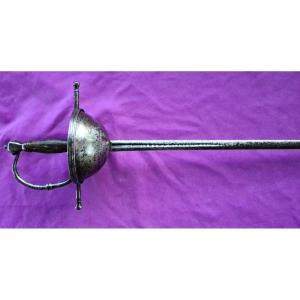














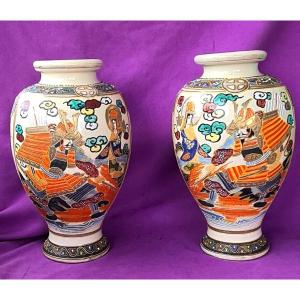
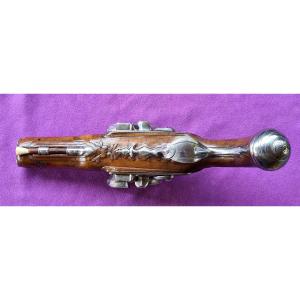

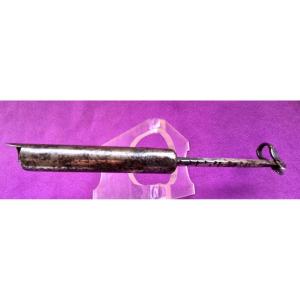




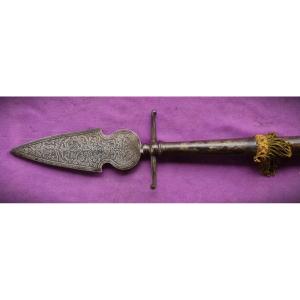




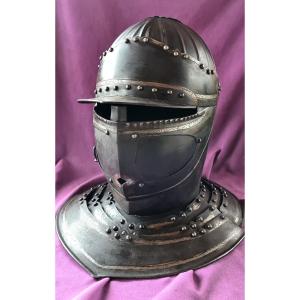


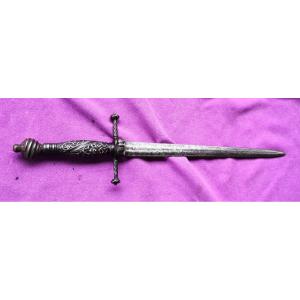



 Le Magazine de PROANTIC
Le Magazine de PROANTIC TRÉSORS Magazine
TRÉSORS Magazine Rivista Artiquariato
Rivista Artiquariato